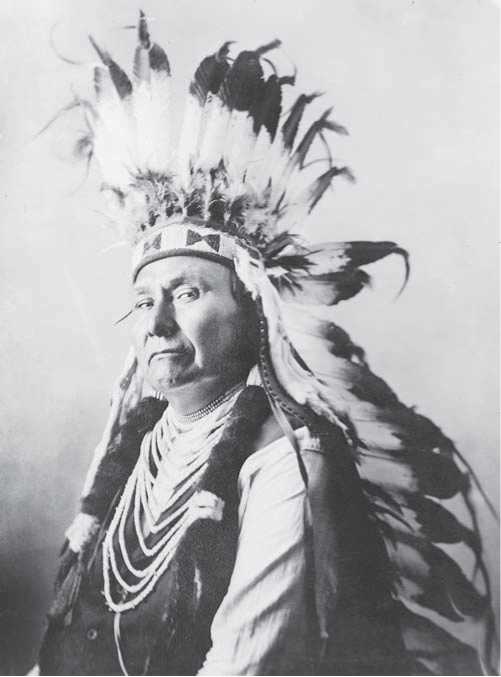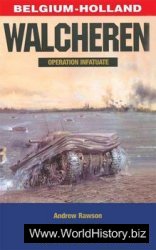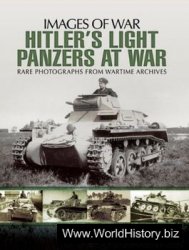The ancient home of the Indian bands that constituted the Nez Perce Nation was in the mountainous region where Oregon, Washington, and Idaho meet. The Nez Perce, like other Native Americans, deified their ancestral land, and renouncing it was the equivalent of giving up their religion. In 1855 the federal government had guaranteed their title to their land, but in 1860 gold was discovered there. Miners rushed in and then remained to raise cattle and crops, despite the fact that they were trespassing. Federal Indian agents in 1863 bribed and coerced the chiefs of some bands to agree to a treaty moving them to Lapwai, Idaho, but other Nez Perce chiefs would not agree to the treaty and remained on their land. Among those was Chief Joseph (ca. 1840-1904), whose band lived in the Wallowa Valley of Oregon. President Ulysses S. Grant in June 1873 ordered that Joseph’s band be given a reservation in part of the Wallowa Valley. Subsequent protests by white settlers, the governor, and the Oregon congressional delegation led to a reexamination of the case by the Office of Indian Allairs (Indian Bureau) and a decision by Grant on January 6, 1877—two months

Chief Joseph of the Nez Perce, in 1900 (Library of Congress)
Before leaving office—that the 1863 treaty obligated all Nez Perce to remove to Lapwai.
Joseph and his fellow nontreaty Nez Perce chiefs, Looking Glass and White Bird, hoped to reason with the Indian Bureau and the U. S. Army. But at a council on May 14, 1877, General O. O. Howard told them that if they did not move in 30 days he would drive them off their land. To avert war, the chiefs agreed to move to Lapwai. Beyond the pain of eviction, moving required the difficult task of rounding up thousands of horses and cattle. Some animals were abandoned to settlers and others were lost while fording the swollen Snake River on the way to Lapwai. Smoldering with resentment, the Nez Perce camped 10 miles from the reservation on June 2, and Joseph and his brother Ollokot used their last days of freedom to go hunting.
In their absence, young braves from White Bird’s band, to avenge a murder two years earlier, murdered four whites and then went on a rampage with 17 other warriors, killing more than a dozen other settlers. When Joseph and Ollokot returned they tried to persuade all to await the army, surrender the guilty braves, and avert punishment for everyone, but they failed. The Nez Perce moved to a defensible position on White Bird Creek and hoped that Howard would send emissaries to talk and avoid further bloodshed, but that did not happen. The pursuing cavalry and volunteers sent no one to talk and attacked at dawn on June 17, 1877, but suffered a disastrous defeat, with 34 men killed while the Nez Perce had only three men wounded. With Howard in pursuit, Joseph crossed the Salmon River to a new defensible position. “No general,” Howard remarked, “could have chosen a safer position, or one that would be more likely to puzzle and obstruct a pursuing foe.” Despite his admiration, Howard relentlessly pursued the Nez Perce, who were encumbered by the old and infirm, women and children, possessions, and livestock. Throughout the summer and into the fall the Nez Perce outfought and, despite encumbrances, outmaneuvered the army on a 1,700-mile retreat that is a classic in military history. In October Colonel Nelson A. Miles and 400 men cornered the Nez Perce at Bear Paw Mountain in Montana, just short of the Old Woman’s Country—Queen Victoria’s Canada—where they hoped to find refuge. After a five-day battle in which both sides suffered heavy losses and Howard reinforced Miles, Joseph surrendered with the understanding that the Nez Perce could return to the Pacific Northwest. With his clothes riddled with bullet holes, Joseph gave his rifle to Miles, turned to Howard, and declared, “I am tired of fighting. Our chiefs are killed. . . . It is cold, and we have no blankets. The little children are freezing to death. . . . Hear me, my chiefs! I am tired. My heart is sick and sad. From where the sun now stands I will fight no more forever.”
To the dismay of Miles, who remained an advocate of the Nez Perce to his death, his promise to Joseph was ignored by Generals Philip Sheridan and William T. Sherman (who wanted to hang Joseph), and the Nez Perce were sent to the Indian Territory (present-day Oklahoma) where 68 died in their first year of captivity. In 1879 Joseph was allowed to go to Washington to plead for the return of his people to Idaho, but Secretary of the Interior Carl ScHURZ was afraid to allow them to return, since indictments were still out for the murders that began the war. In the 1880s the Nez Perce were allowed to return to the Pacific Northwest, but most of them, including Joseph, were kept at Colville, Washington. In 1899 and again in 1900 Joseph visited his beloved Wallowa Valley, but white settlers there would not sell him a small piece of land that had belonged to him and his ancestors. Joseph died in Colville on September 21, 1904.
Further reading: Alvin M. Josephy Jr., The Nez Perce Indians and the Opening of the Northwest (New Haven, Conn.: Yale University Press, 1965).
Norton, Charles Eliot (1827-1908) scholar, editor, art professor
The leading American apostle of culture in the Gilded Age, Charles Eliot Norton was born on November 16, 1827, at Shady Hill, his family’s 50-acre estate in Cambridge, Massachusetts, and died there 80 years later. His father, Andrews Norton, was a Harvard Divinity School professor, and his mother, Catharine Eliot, was the daughter of a wealthy Boston merchant, so Norton grew up in comfortable, intellectually stimulating surroundings. In 1846, when not quite 19, he graduated from Harvard with distinction in Greek, Latin, and political economy. The next day he started work on a Boston wharf for East India merchants, warehousing Calcutta hides, writing business letters, and running errands. Although he did not like his job, he worked conscientiously, using his free time in more congenial pursuits.
Despite his family’s fortune, the maldistribution of wealth troubled Norton, who in late 1846 began conducting evening classes to help working men and boys escape from poverty. Years later, when one of them became mayor of Providence, Rhode Island, he credited Norton for turning his life around. Norton also found time for intellectual pursuits, writing articles on the diverse subjects of William Tyn-dale, translator of the Bible and martyr, and archaeological remains in western America, and helping Francis Park-man revise his Oregon Trail for publication.
After three years in the countinghouse, Norton, in 1849, went to India as supercargo (to handle commercial transactions) for his firm. That trip and especially his extended journey homeward changed Norton’s life. In India he disparaged British colonialism and caste systems and was disturbed by the poverty and “superstitions.” He came home by way of Europe, arriving in Paris in spring 1850, where he met his lifelong friend, fellow-American George William Curtis. In England he developed a passion for medieval church architecture and was inspired by London art galleries. In fall 1850 he returned to the Continent and spent his time most profitably in Florence, where Elizabeth and Robert Browning welcomed him, and Browning, a discerning critic, lectured him on paintings as they visited art shops. In 1851, after touring 20 months, his father’s health and business demands required Norton to return home.
Norton engaged in East India trade on a modest scale until his father’s death in 1853, when he gradually withdrew from trade, while managing the family’s property and increasing his literary activities. These ranged from editing the theological papers of his father, a conservative Unitarian, to a perceptive, favorable review of Walt Whitman’s Leaves of Grass in 1855. Norton, however, was not robust, and that year a doctor ordered him to Europe. Accompanied by his mother and two sisters, Norton traveled, primarily in Italy, studied art and architecture, and concluded that they reflect the moral climate of an age. He befriended the English art critic John Ruskin, met literary figures (among them Charles Dickens and William Makepeace Thackeray), and began a translation of Dante’s Vita Nuova, which he printed privately as The New Life of Dante Aligheri (1859).
Upon his return to the United States Norton embarked on a 10-year career in journalism. Although he remained in poor health, he contributed articles to the newly established Atlantic Monthly, edited by his friend James Russell Lowell. Norton’s articles taught that fine art, architecture, literature, and scholarship, though deficient in America, can have a positive function in a society. Norton summed up many of his ideas on culture and society in Notes of Travel and Study in Italy (1860). He often despaired that the United States was too commercial, too corrupted by prosperity, too restless, too hasty to cultivate “the spacious world of noble and everlasting thought.” The North’s reaction to the outbreak of the Civil War gave him hope for the country, and he supported the Union cause. He also continued his studies, delivered 12 Lowell Lectures on medieval subjects, and in May 1862 he married Susan Ridley Sedgewick. In January 1863 John Murray Forbes appointed Norton editor of the New England Loyal Publication Society. He selected articles (most of them previously published) and sent them to almost 1,000 editors, who served about a million readers weekly. Beginning with the January 1864 issue,
Norton became coeditor with Lowell of the North American Review and did most of the nitty-gritty work in giving new life to that old journal. In addition, Norton in 1865 was a founder of The Nation and for years was a frequent contributor to it.
Having resigned in 1868 as editor of the North American Review, Norton sailed for a five-year European sojourn. He was accompanied by his wife, who, like him, was in fragile health, their four children, his mother, and his two sisters. These were years of disappointment and disillusion but also of maturing scholarship. He became acquainted with Charles Darwin and a close friend of Thomas Carlyle. Industrialism, he warned, accentuated the gap between rich and poor in England, and unless stopped, the despair of the masses would lead to violent revolution. News from home of corruption in the Ulysses S. Grant administration dispelled Norton’s optimism for a future of political sagacity and republican purity.
In 1873, a year after his wife died in childbirth, Norton and his six children returned to Shady Hill. President Charles William Eliot of Harvard, Norton’s cousin, offered him a position in fine arts, starting in 1874. That fall Norton began 23 years of “preaching the gospel of Art to future generations of Americans.” He stressed that the fine arts reflected the moral and intellectual conditions of past ages but declared that Gilded Age America, with its plutocracy and poverty, machines and materialism, “starved the creative spirit.” While working to develop in his students an appreciation of great art and literature, Norton encouraged them to develop a creative spirit. Norton was opinionated. After denouncing all politicians except Grover Cleveland, he denounced him for his bellicose message on the Venezuela boundary dispute. Norton insisted in 1890 that all Harvard buildings built over the past 50 years were ugly and incongruous and should be destroyed. He attacked lootball for resembling the brutality of a Roman spectacle. He amused most students, was beloved by many, and profoundly influenced a few.
His scholarship was broad. He translated Dante’s Divine Comedy (1902), edited the poems of John Donne, and published Historical Studies of Church-Building in the Middle Ages (1880). When his dear friends, Carlyle, Lowell, Curtis, and Ruskin died, Norton edited their works, speeches, or letters. He died on October 21, 1908.
Further reading: Kermit Vanderbilt, Charles Eliot Norton: Apostle of Culture in a Democracy (Cambridge, Mass.: Harvard University Press, 1959).




 World History
World History









